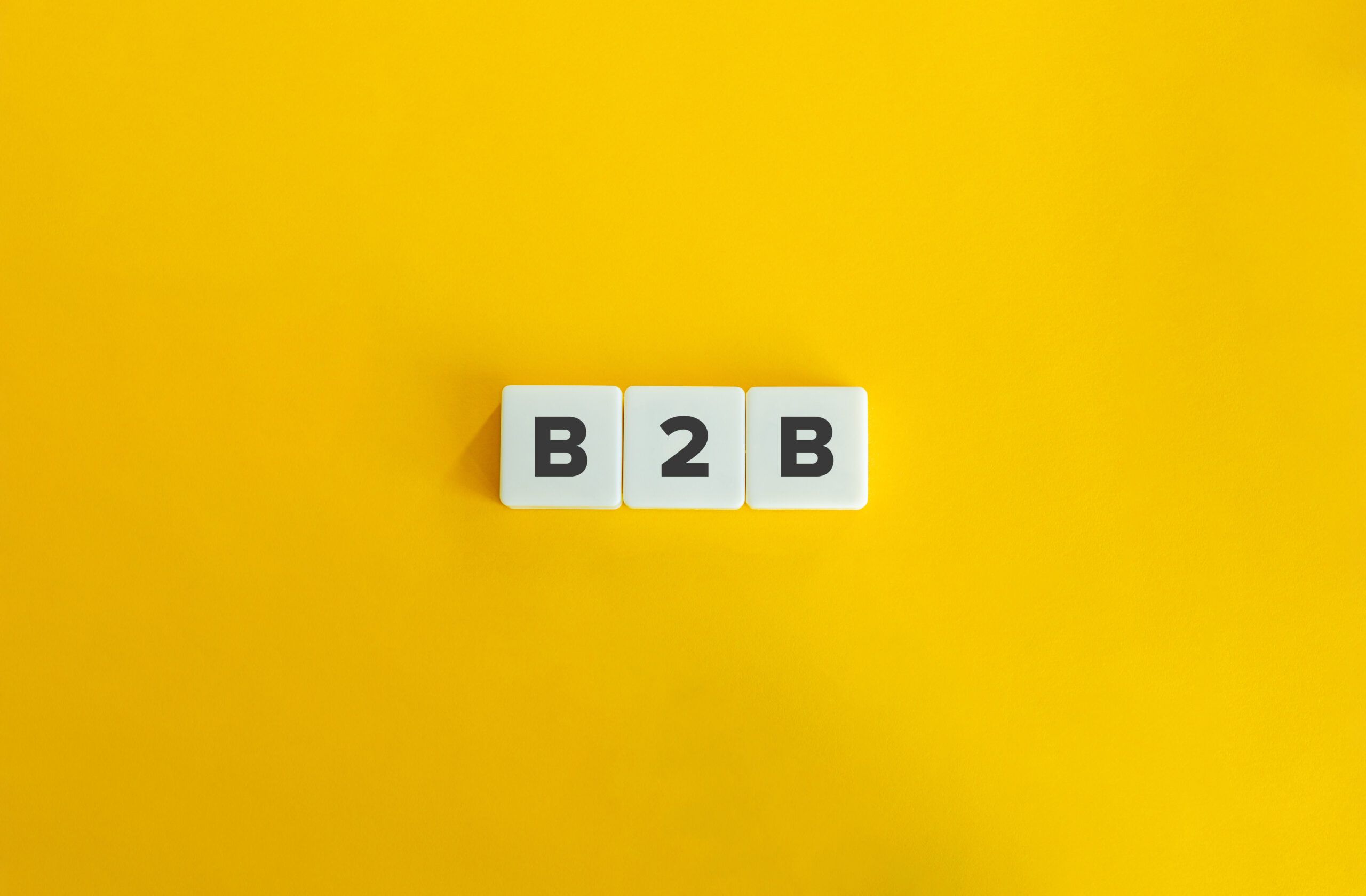Navigating Direct Mail for B2B Growth
By Paul Bobnak | June 12, 2024

Navigating B2B Growth through Direct Mail Tactics
Direct mail for B2B at first glance seems pretty much like B2C mail: both are about sending materials to convert prospects into customers. Many of the processes and fundamentals are the same. And mail’s value proposition – the tactile power of ink on paper – has taken on even greater importance as digital channels become cluttered with messaging.
Thanks to improvements in digital targeting and printing technologies, B2B direct mail has many opportunities to be more impactful in reaching the right prospects and customers and moving them along the sales funnel to take action. In this post, we’ll look at strategies to get the most effective and efficient use of mail to drive engagement at all stages of the sales funnel and move a customer to respond.
Understanding the B2B Landscape
B2B marketing strategies and tactics have changed a lot in the last 20 years. They’ve become much more omnichannel, using data-driven nurturing across media to reach customers at the right time with the right message. But to support these efforts fully, as well as invest for the future, it’s vital to first break down silos within organizations.
Challenges facing today’s successful B2B marketing marketers today include:
Dealing with budgetary and other restrictions on resources
Finding and keeping the right talent, especially team members skilled in data analytics across multiple channels
Tracking and measuring performance across channels
Analyzing results quickly to adjust resources and investments used in different channels, including direct mail marketing
Aligning sales and marketing goals within companies – effective planning and collaboration needs to overcome silos, as already noted
A key difference between today’s direct mail for B2B and mail from years past is the growth of the role of data in reaching and targeting audiences. B2B data isn’t about volume anymore but rather, value, putting quality over quantity. Besides accuracy, your data must be relevant – and demonstrate it – to the target audience.
Variable Data Printing (VDP), for example, lets you leverage any of hundreds of data points to target prospects at any stage of the sales funnel with personalized sales copy, content, marketing messages, and offers.
The Power of Direct Mail in B2B
Direct mail for B2B is a powerful channel because of how it engages prospects. Because it is a physical medium, it immediately cuts through the clutter created by digital communications.
Highly targeted mail pieces that are personalized are more relevant to the audience. When they address potential pain points, they build trust as they move the business prospect closer to converting. Additional credibility is achieved by aligning direct mail efforts with other channels with their own touchpoints, such as email and social media. Brand consistency helps differentiate your company from your competitors.
Statistics also show the effectiveness of direct mail for B2B:
According to HubSpot, 18% of B2B marketers’ budget is assigned to direct mail marketing and print advertising
81% of B2B marketers say that they personally are very likely to open a mail package at work
A 2022 Forrester Research survey revealed that 76% of B2B marketers cite mail automation tied to buyer intent and behavior as valuable to their marketing efforts
Navigating Direct Mail Strategies
According to the 95-5 rule, 95% of potential buyers aren’t always ready to buy now but will be in the market in the future. Companies can grow long term by investing in brand-building activities like content marketing, to target that 95%. Owned media and channels keep these prospects engaged and build trust by providing answers and even a sense of community.
The remaining 5% who are ready to buy now can be reached directly with lead generation.
Direct mail for B2B can be used throughout the main steps of the customer lifecycle. For example:
Top of the funnel – Your mail is simply designed to drive awareness of your brand and encourage further exploration of your product or service through visiting a website. Including a small promotional item or freemium works well here to grab the prospect’s attention.
Middle of the funnel – To generate demand, your direct mail piece should build on their interest by making a clear call to action and offering an incentive to take another step for further consideration of your product or service. A QR code for a webinar signup and a simple, well-designed landing page makes it easier to respond, as long as you take into account that their timetable may be a long one.
Bottom of the funnel – Through several channels, including mail and email, engage the prospect and move them towards a decision with additional targeted content and personalized gifts.
With account-based marketing (ABM), you can bridge the gap between marketing and sales by using direct mail to focus on your most valuable prospects. It can be useful at any point along the sales funnel. An initial broad-based approach, for example, centers on building from initial brand awareness. Next, as consideration or evaluation of your product or service continues, mail can target specific pain points or questions. And finally, late in the decision-making process, a highly-targeted and personalized mail package provides any last-minute needed information as well as a high-value incentive.
Metrics and Measurement
Direct mail response is all about numbers – what you spend versus what you get back. And it’s important to know all of these metrics because you have to figure out how they align with the goals of your campaign.
B2B marketers measure success by tracking key performance indicators (KPIs) such as:
Average response rate – Divide the total count of responses by the number of pieces mailed, then multiply by 100. This figure, though, can be misleading, as it doesn’t always indicate if a mailing succeeds or fails.
Lead rate – Divide the number of leads generated by the number of pieces mailed, then multiply by 100.
Conversion rate – Divide the number of sales by the total number of responses, then multiply by 100. Again, the quality of the sales achieved may be more important to the overall success of the campaign than the amount of sales.
Customer acquisition cost (CAC) – Divide number of new paying customers by total of all sales and marketing costs.
Return On Investment (ROI) – Subtract revenue generated by the mail piece from the campaign costs, then divide by the campaign costs. Next, multiply that result by 100 to get this figure.
Lifetime Value (LTV) – This customer KPI measures the project revenue a customer is expected to generate over a lifetime. Calculating this number can be complicated. Also, it may vary greatly based on company and type of customer. The point is that some customers are worth nurturing over the long term with smart use of data, incentives, upsells, and other tactics.
Innovations and Trends
One of the most promising innovations in B2B direct mail is incorporating artificial intelligence (AI) into everyday processes when crafting marketing campaigns.
Today, you can use AI to:
Identify your most suitable prospects based on carefully set parameters
Generate ideas for messaging (among other important components of a direct mail package, such as images or graphics)
Customize messages to individual prospects
This and other tactics are potential ways to save time in the buying process. According to the Outlook for Advertising, Marketing, and Data 2024, a January 2024 study by the Winterberry Group, 58% of B2B marketers said that customers are spending more time on vendor websites and social media researching products and services before making purchasing decisions.
Also, 51% of marketers in that survey said that personalization is becoming more important in content and media consumption to buyers.
And here’s an area of opportunity. According to a recent Gitnux study, while 70% of B2B sales organizations claim to have an AI in their sales strategy, only 21% have actually implemented it. With the pairing of AI and VDP, relevant and engaging direct mail pieces that connect with prospects have the power to generate leads more quickly and affordably than in the past.
Wrapping it up
Direct mail for B2B can be a powerful way to reach prospects and make a sale as part of a long-term, multi-touch strategy. Your marketing messages, when delivered to targeted accounts and audiences, help to build trust and confidence in your brand. The right branding makes and keeps your company’s products and services top-of-mind in a competitive marketplace where everything seems the same. Just remember that above all else, you’re talking to people – not buildings – so understand how to provide solutions for their pain points.
At mailing.com, we have 50+ years of experience working with marketers trying to reach audiences with powerful and persuasive B2B direct mail campaigns. Reach out to us to find out more how we can help.


